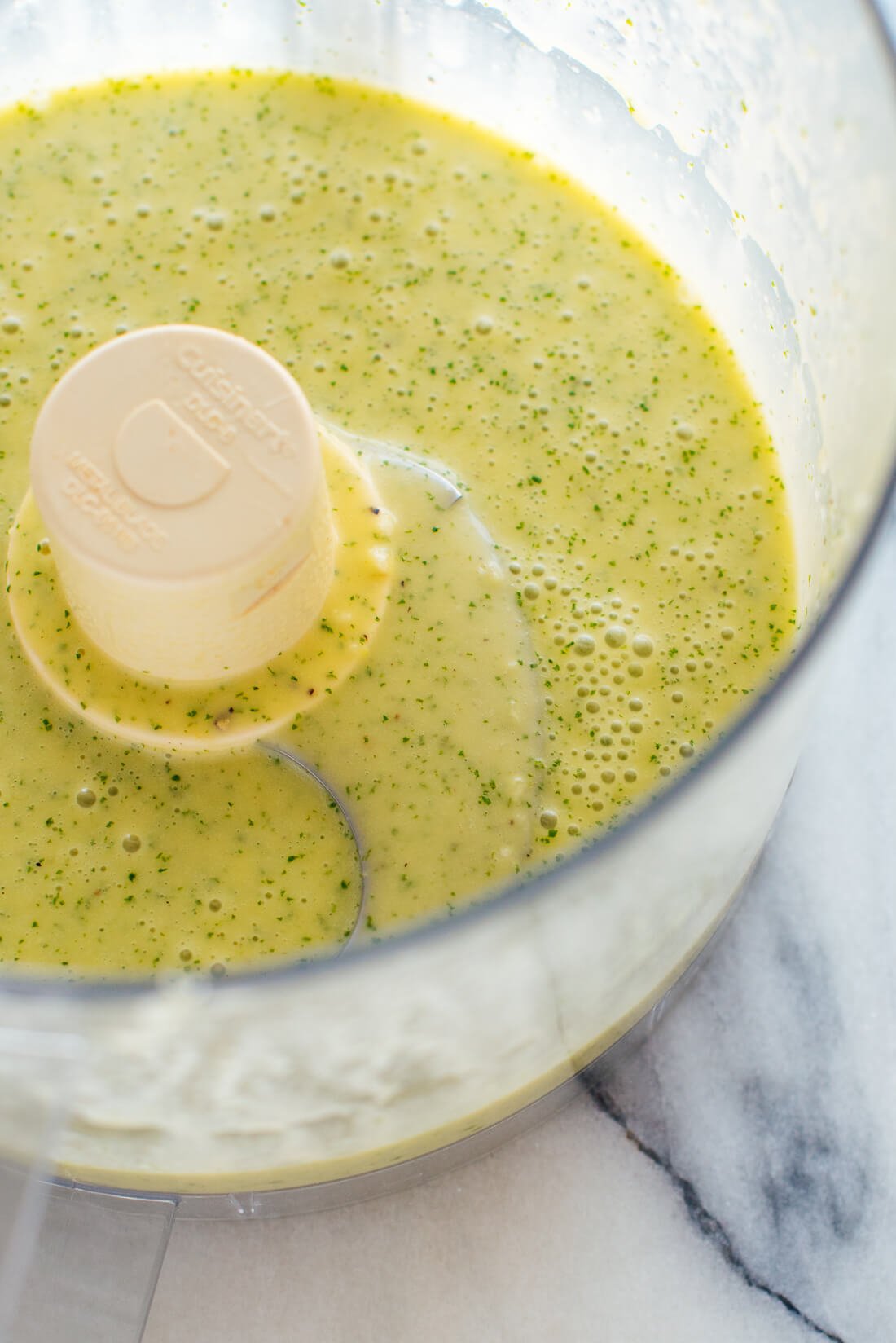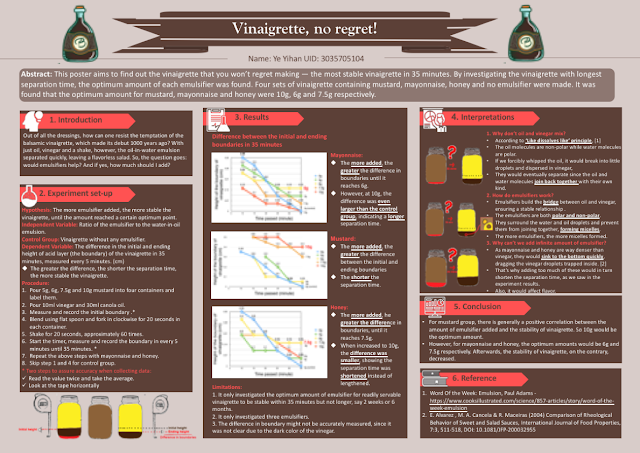How different utensils used affect the taste of the fresh mint dressing?

History
Simple sauce like vinaigrette is much older than you think. 2000 years ago, the Babylonians already using the classic vinaigrette (oil and vinegar) on greens' dressings. And the first mayonnaise has been presented to the public over 200 years ago on a French Nobleman's table. Until the 20th Century, salad development has finally been raised by the Americans.
Experiment
Who?
Mike Cheung Chin Pang
What?
Test the experiment of different utensils affect the taste of the dressing
Where?
Home
When?
carry out the test after using five different utensils on five dressings
Why?
To find out the best utensil for making dressings
How?
By making 3 dressings with different utensils each time.
Invite 3 volunteers to taste each dressing respectively. And prepare them a form to evaluate the bitterness from 1 to 10.
The science behind
The myth of vinaigrette taste bitter by mixing on the aluminum utensil
A basic vinaigrette is mixed with vinegar and oil.
First of all
What are the components of vinegar?
:max_bytes(150000):strip_icc():format(webp)/aceticacid-56a129995f9b58b7d0bca2c4.jpg)
It is basically a liquid consisted of acetic acid, water and trace amounts of chemicals, including flavorings.
For all vinegar, it should contain no less than 4% of acetic acid. The stronger vinegar has a higher proportion of acetic acid within.
But mention that too concentrated acetic acid can be corrosive and damage our skin.
:max_bytes(150000):strip_icc():format(webp)/reactive-nonreactive-2k-56a8c21b5f9b58b7d0f4dc0f.jpg)

Then.....so what?
Well, aluminum possessed a passivating acid-resistant film of aluminum oxide which can protect the acetic acid destruct the utensils.
Most of the time aluminum tanks are used for transport acetic acid.
BUT !!!

Aluminum utensils are identified as reactive cookware.
By constantly stirring acetic acid on the utensil may result in dissolving the layer of aluminum oxide of the aluminum utensil
Makes the aluminum dissolve in the dressings, possibly discolor the dressings in gray or makes it taste like "metallic" which means bitter instead.
Invite 3 volunteers to taste each dressing respectively. And prepare them a form to evaluate the bitterness from 1 to 10.
The science behind
The myth of vinaigrette taste bitter by mixing on the aluminum utensil
A basic vinaigrette is mixed with vinegar and oil.
First of all
What are the components of vinegar?
:max_bytes(150000):strip_icc():format(webp)/aceticacid-56a129995f9b58b7d0bca2c4.jpg)
It is basically a liquid consisted of acetic acid, water and trace amounts of chemicals, including flavorings.
For all vinegar, it should contain no less than 4% of acetic acid. The stronger vinegar has a higher proportion of acetic acid within.
But mention that too concentrated acetic acid can be corrosive and damage our skin.
:max_bytes(150000):strip_icc():format(webp)/reactive-nonreactive-2k-56a8c21b5f9b58b7d0f4dc0f.jpg)

Moreover, acetic acid also is corrosive on metal. Like iron, magnesium, and zinc. forming hydrogen gas and salts named as acetates.
Then.....so what?
Well, aluminum possessed a passivating acid-resistant film of aluminum oxide which can protect the acetic acid destruct the utensils.
Most of the time aluminum tanks are used for transport acetic acid.
BUT !!!

Aluminum utensils are identified as reactive cookware.
By constantly stirring acetic acid on the utensil may result in dissolving the layer of aluminum oxide of the aluminum utensil
Makes the aluminum dissolve in the dressings, possibly discolor the dressings in gray or makes it taste like "metallic" which means bitter instead.
NOW
TIME FOR MYTH-BUSTING!!!!
Since the original recipe is lacking the vinegar in mixing. According to comments from the author of the recipe, I will substitute the lemon juice by vinegar.
Recipe for 4 servings
2 cup extra-virgin olive oil
2 cup vinegar
1 cup packed fresh mint (spearmint) leaves (about 2, 2 2/3 or ¾-ounce package)
12 tablespoons honey or maple syrup
4 tablespoon Dijon mustard
8 cloves garlic, roughly chopped
1 teaspoon fine sea salt
40 twists of freshly ground black pepper
3 variables
Independent variables
Types of utensils (change the type of utensil each time for a new dressing)
Dependent variables
The bitterness of the dressings after each utensil used
Controlled variables
Independent variables
Types of utensils (change the type of utensil each time for a new dressing)
Dependent variables
The bitterness of the dressings after each utensil used
Controlled variables
- Source/brand of all ingredients (extra virgin olive oil, vinegar, mint leaves, honey, Dijon mustard, garlic, fine sea salt, ground black pepper)
- Volume and amount of all ingredients (extra virgin olive oil, vinegar, mint leaves, honey, Dijon mustard, garlic, fine sea salt, ground black pepper)
- Time for mixing all ingredients together each time
- Speed of mixing
Reference
(recipe and image)
https://cookieandkate.com/fresh-mint-dressing-recipe/
https://www.thespruceeats.com/what-is-non-reactive-cookware-3050541
https://www.thespruceeats.com/what-is-non-reactive-cookware-3050541
(history)
(Science-behind)
(Components of vinegar)
(reactive cookware)



Comments
Post a Comment